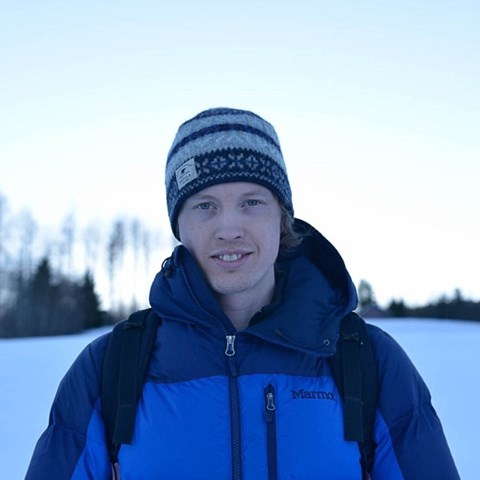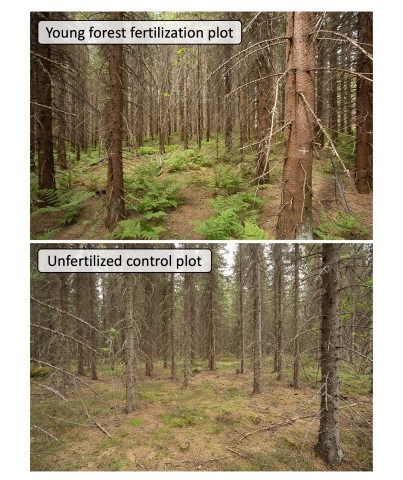Benjamin Forsmark

Biologist mainly focused on soil biology, nutrient dynamics, and climate change in forests.
My Ph.D. research (Forest Ecology and Management, SLU, Umeå) focused on the impact of nitrogen deposition on the boreal forest carbon sink. I have previously worked in the Swedish national forest inventory (SLU), and on pheromone communication in insects associated with dead wood in oaks (Lund University). I did my undergraduate studies at Lund University and have my roots in the countryside in the province of Småland, southern Sweden.
Young forest fertilization
Young forest fertilization (YFF) can enhance the carbon sink and supply of biomaterials from forests. YFF is initiated at a mean tree height of 3-4 meters and supports a higher leaf area and faster canopy closure, leading to greater carbon stocks in above ground biomass as seen in the pictures of a 59-years-old Norway spruce forest at Flakaliden in the middle boreal zone.
The experiment has demonstrated that it is possible to double production over a full rotation by smart soil resource management, but it remains to be shown how YFF can be efficiently implemented in operational forestry and which sites are most suitable. The YFF project will utilize a series of similar fertilization experiments, with simplified fertilization schemes that can be implemented in operational forestry, replicated (n=9) across a wide range of site conditions, and at a geographical scale that is representative for most of the productive forests in Sweden. Using this experimental setup, we will:
- Identify the potential yield of forest products that can be used to substitute fossil energy and building materials.
- Identify the potential yield of other carbon sinks on-site, including belowground biomass compartments and soil organic matter, and export and losses of carbon and nutrients.
- Estimate the market price for carbon capture and associated investments and operational costs to implement YFF as a viable business strategy by including the yield in tradable forest products (1) and additional on-site carbon sinks (2) in an economic model and life cycle analysis.
